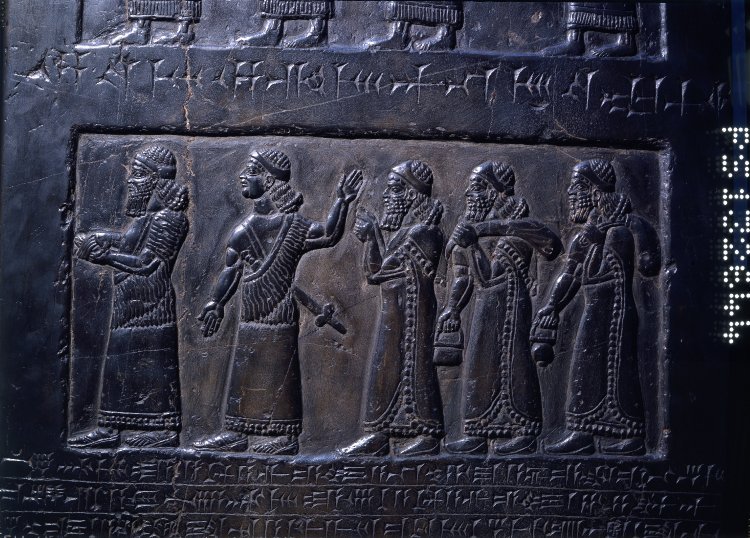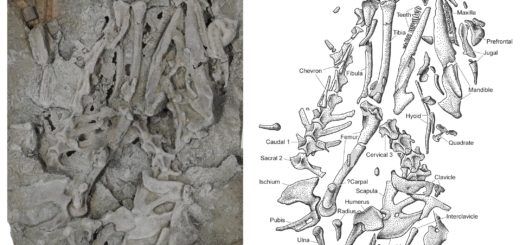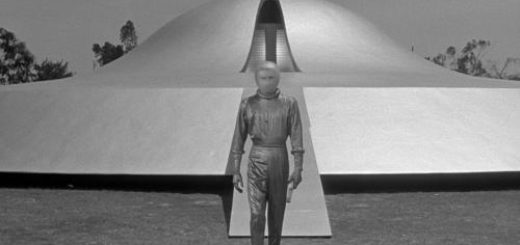The Black Obelisk Of Shalmaneser III – Great Assyrian Ruler
The Black Obelisk of Shalmaneser III is limestone monument that celebrates thirty-one successful years of military campaigns by king Shalmaneser III and his prominent minister.
Black Obelisk of Shalmaneser III , one of Assyria’s greatest treasures, was uncovered in 1854 by British archaeologist Austen Henry Layard.

The Black Obelisk of Shalmaneser III – Image credit: British Museum[/caption]
A series of inscriptions on the obelisk are decorated with illustrations that show the ceremony of paying tribute to the king in person.
They are presented in five rows and each carved row has four panels, one on each side of the Black Obelisk. The scenes show king Shalmaneser III (858 – 824 BC) who is receiving tribute from vassals across the Assyrian empire.
The obelisk was created in 825 BC in a courtyard of a main building in Kalhu, ancient Assyrian city of Kalhu (the Biblical Calah).
The Black Obelisk of Shalmaneser III – Image credit: British Museum[/caption]
At the time of the stela’s creation, Kalhu was the capital of an Assyrian empire broken apart by civil war, so maybe it was intended to remind the king’s supporters and followers of the extent of his authority and rule.
During the 9th century BC, Babylonia’s neighbor Assyria enjoyed a revival of political power but abstained from encroaching on the rights of Babylonia.
In those times, Assyria had a temporary period of weakness while Babylonia was much stronger as power.
However, it is important to mention that king Shalmaneser III was the son of the famous Ashurnarsipal II, one of the great builders in Assyrian history, who took over Calah (Kalhu) and by a large construction program, he completely transformed the city to the leading metropolis in Assyria.
The Black Obelisk of Shalmaneser III – Image credit: British Museum[/caption]
The Black Obelisk was rediscovered in 1846 and it is believed to be the most complete Assyrian obelisk yet found in archaeological excavations. The Assyrian treasure monument became a museum object in London, and gained fame for depicting an Israelite king, Jehu, mentioned in the Christian Bible.
The obelisk’s richly presented details enable us to imagine the power of Assyrian empire in the west during Shalmaneser III’s long and very successful reign.
Written by – A. Sutherland AncientPages.com Staff Writer
Copyright © AncientPages.com All rights reserved. This material may not be published, broadcast, rewritten or redistributed in whole or part without the express written permission of AncientPages.com



 Creators of mankind
Creators of mankind Description of “Tall white aliens”
Description of “Tall white aliens” Where they came from?
Where they came from? About hostile civilizations
About hostile civilizations The war for the Earth
The war for the Earth “Tall white aliens” about eternal life
“Tall white aliens” about eternal life Video: “Nordic aliens”
Video: “Nordic aliens” Aliens
Aliens Alien encounters
Alien encounters The aliens base
The aliens base UFO
UFO Technology UFO
Technology UFO Underground civilization
Underground civilization Ancient alien artifacts
Ancient alien artifacts Military and UFO
Military and UFO Mysteries and hypotheses
Mysteries and hypotheses Scientific facts
Scientific facts


















